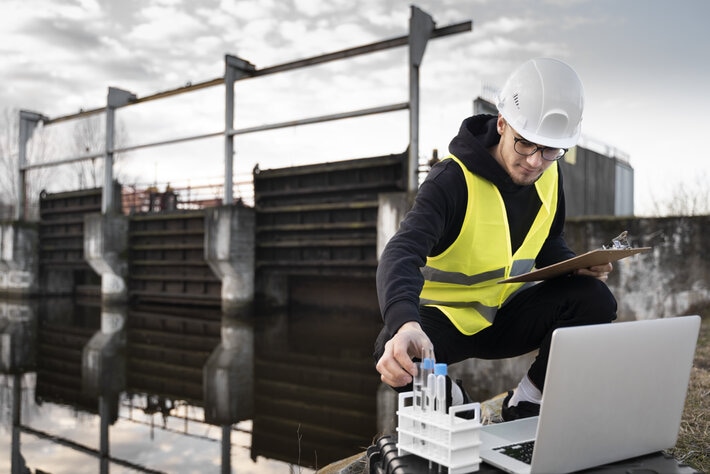
Telit Cinterion announced that it is working with WaterSignal to ensure always-on connectivity to its real-time water monitoring and leak detection systems. As water scarcity continues to increase worldwide, baseline water benchmarking and evaluation have become critical, requiring operation teams for domestic meters, irrigation systems and cooling towers to have reliable access to on-demand data.
Through WaterSignal’s remote water monitoring capabilities, supported by cellular LPWA (low-power wide-area) modules and IoT (Internet of Things) connectivity solutions, teams gain deeper insights into their towers and systems’ efficiencies. This helps eliminate the need to perform repetitive, manual day-to-day meter readings.
WaterSignal’s real-time water monitoring and leak detection system enables make-up and blow-down meter monitoring for cooling towers, helping teams search for leaks proactively, mitigate water loss and damage and justify evaporation credits with local municipalities. The technology is non-invasive, unlike others, WaterSignal’s solutions attach to any existing water meter without a disruptive installation, significantly reducing costs while eliminating the need for additional city approval.
In light of ongoing and worsening power outages, WaterSignal needed to transfer water data independent of a power source. The company also needed a dependable technology partner for cellular IoT connectivity and network services. Because of these requirements, WaterSignal turned to Telit Cinterion’s cellular LPWA modules and IoT connectivity solutions for their units.
Telit Cinterion’s cellular LPWA supports various devices, from point-of-sale terminals and smart meters to industrial sensors and asset management. Its modules include Power Saving Mode (PSM) and extended Discontinuous Reception (eDRX), ideal for increasing IoT application power saving and battery life when backed by networks.
The cellular LPWA module family form factor also allows developers to employ a ‘design once, use anywhere’ strategy, helping them decrease costs, truncate development time and deploy the most optimal technologies for the application’s environment. In addition to providing performance for the module, the radio frequency front-end (RFFE) engineering delivers reliable connections, even for IoT devices in hard-to-reach locations typical of a water monitoring setting.
“Telit Cinterion is a leading IoT provider and was selected because of its excellent reputation for quality modules, which later expanded to its IoT connectivity network services,” said Mike Drake, vice president of engineering at WaterSignal. “WaterSignal can ensure connectivity for customers via cellular data rather than Wi-Fi. It does not require a connection to power. This capability provides a more stable connection. It allows the WaterSignal device to communicate, even in deep vaults or locations far away from buildings with Wi-Fi.”
“When monitoring critical resources, like water, a reliable connection is pivotal to maintaining visibility and extracting actionable insights,” said Neset Yalcinkaya, SVP sales Americas at Telit Cinterion. “WaterSignal’s technology is invaluable for operation teams, and we are pleased that Telit Cinterion’s cellular LPWA modules and IoT connectivity solutions are central to providing that essential connection, particularly the ability to use cellular instead of Wi-Fi to transfer water data independently of a power source during an outage.”
Comment on this article below or via Twitter: @IoTNow_
- SEO Powered Content & PR Distribution. Get Amplified Today.
- PlatoData.Network Vertical Generative Ai. Empower Yourself. Access Here.
- PlatoAiStream. Web3 Intelligence. Knowledge Amplified. Access Here.
- PlatoESG. Carbon, CleanTech, Energy, Environment, Solar, Waste Management. Access Here.
- PlatoHealth. Biotech and Clinical Trials Intelligence. Access Here.
- Source: https://www.iot-now.com/2023/10/13/137168-watersignal-enhances-water-monitoring-with-telit-cinterions-iot-solutions/



